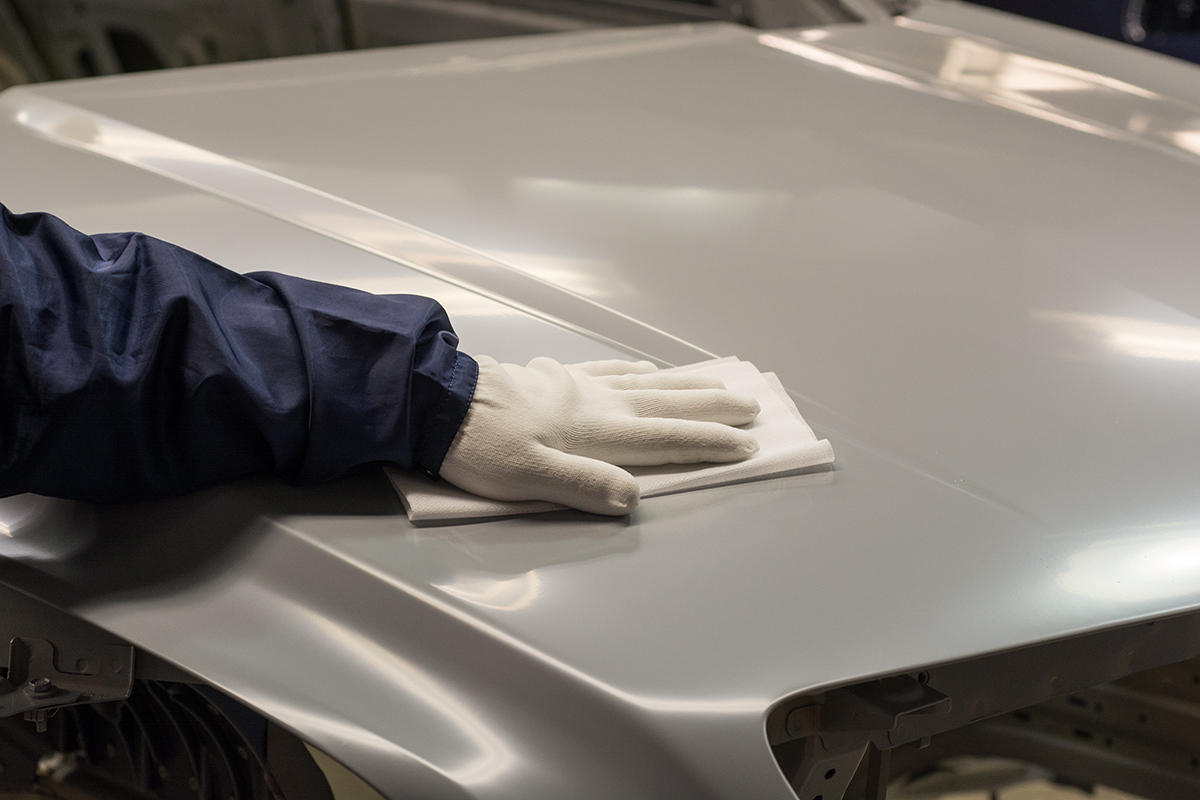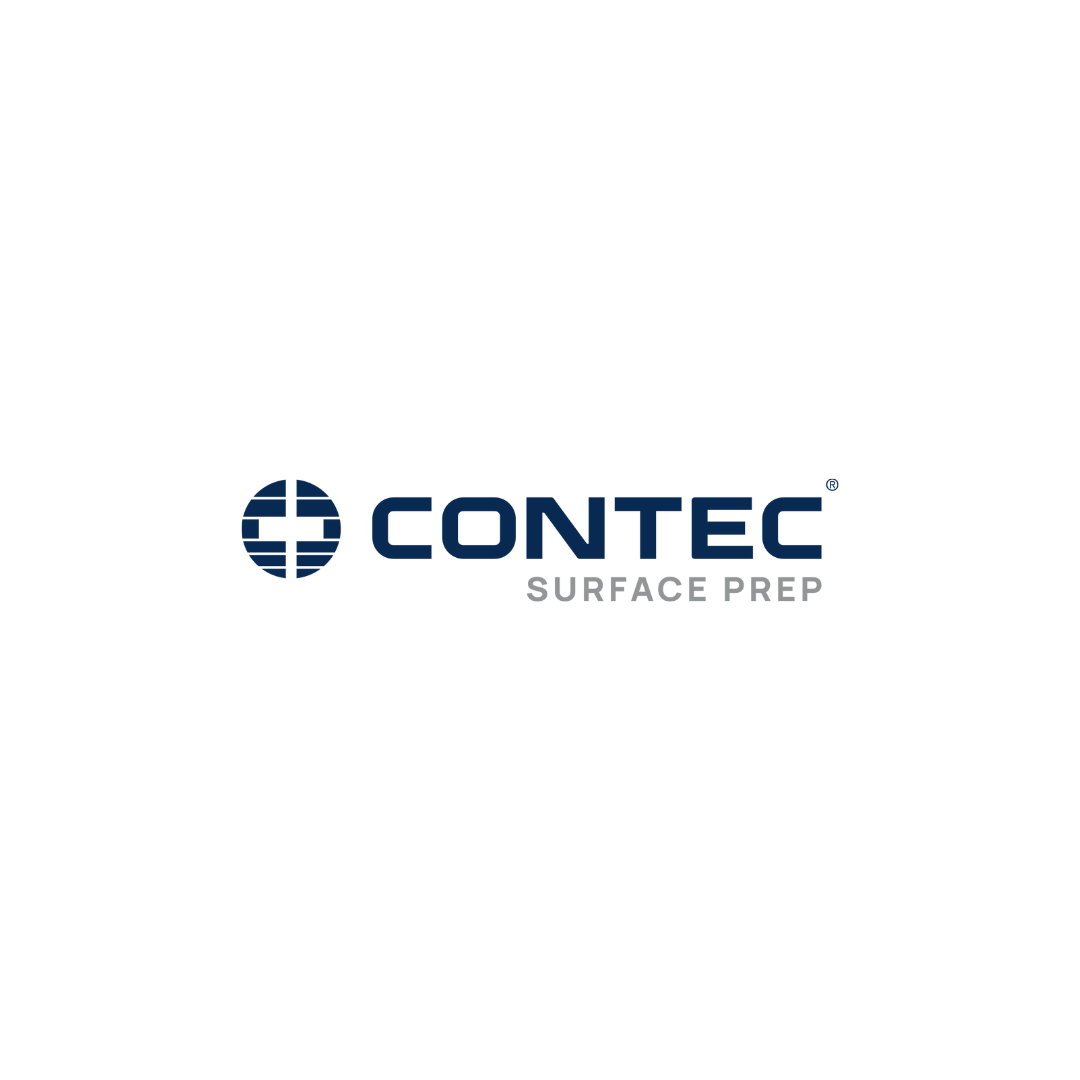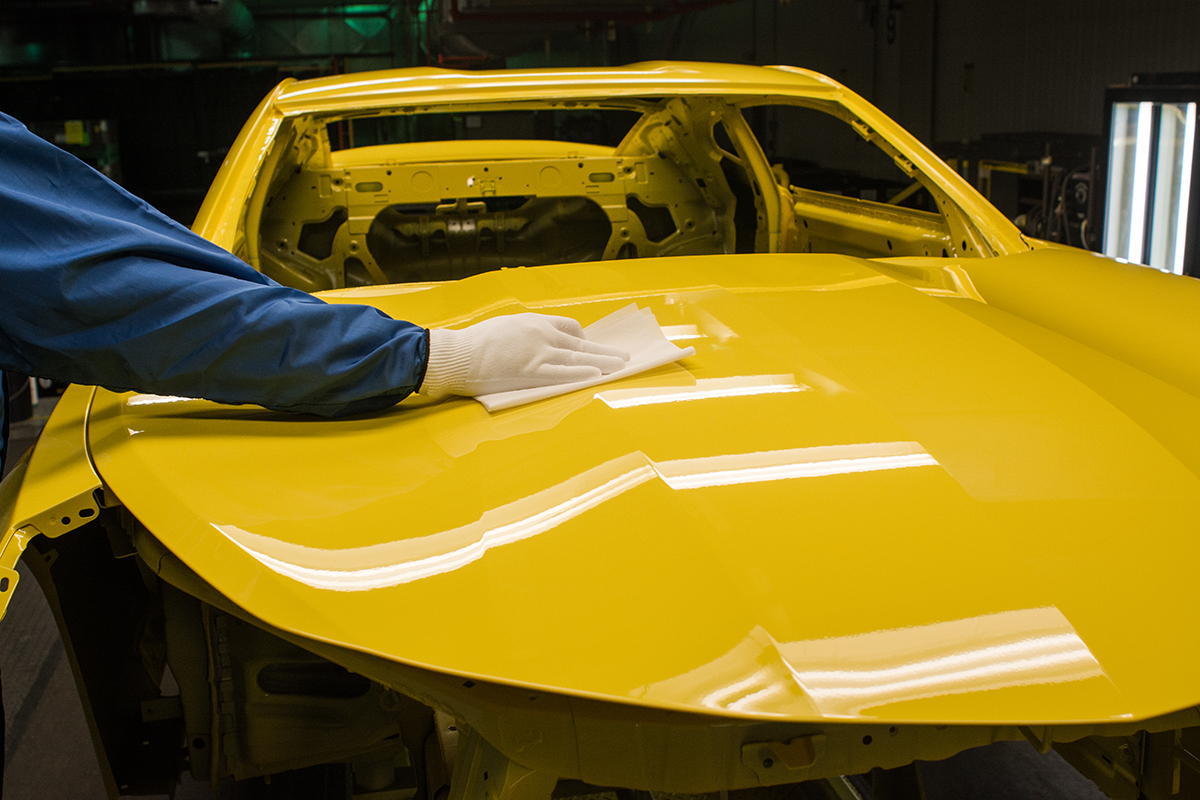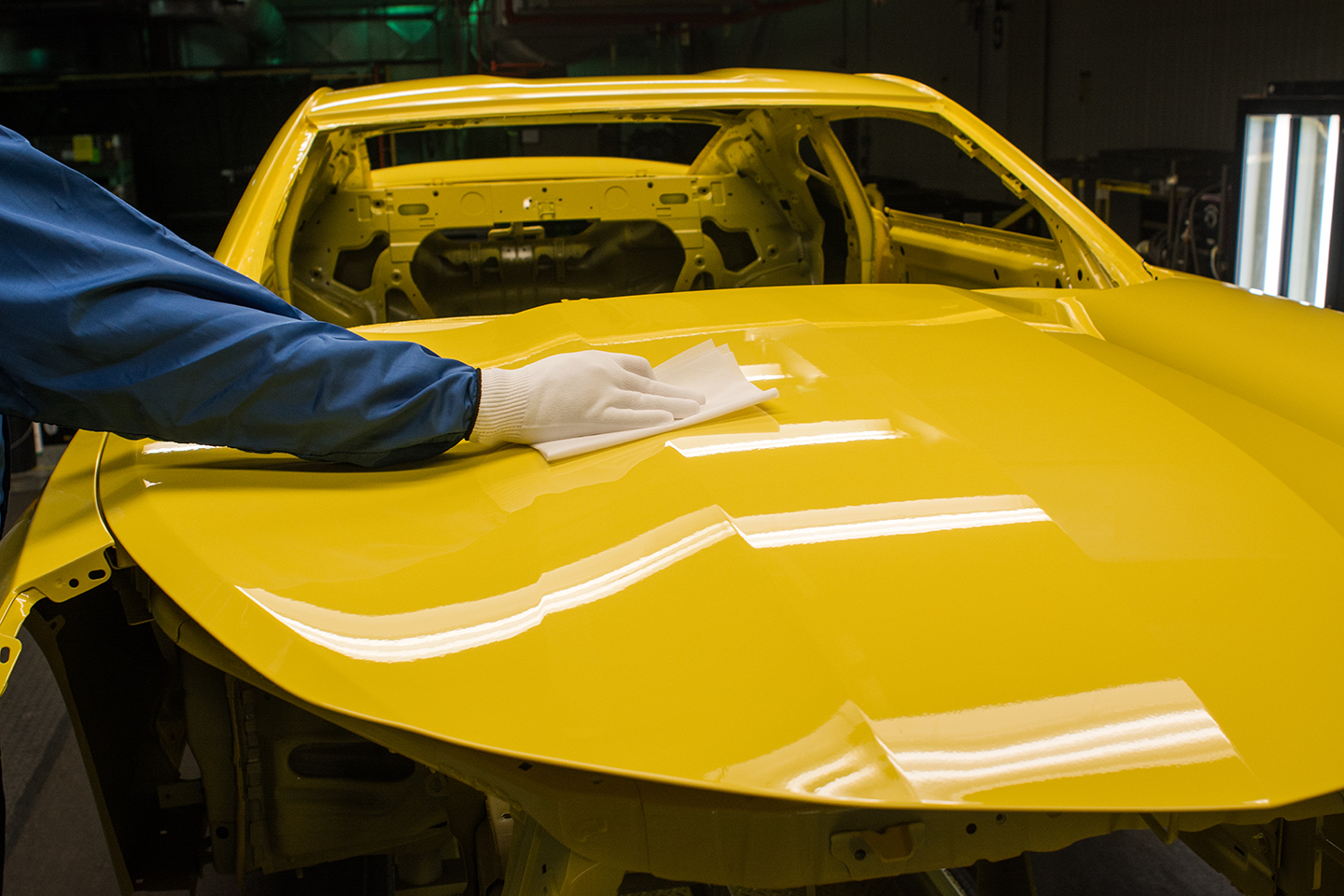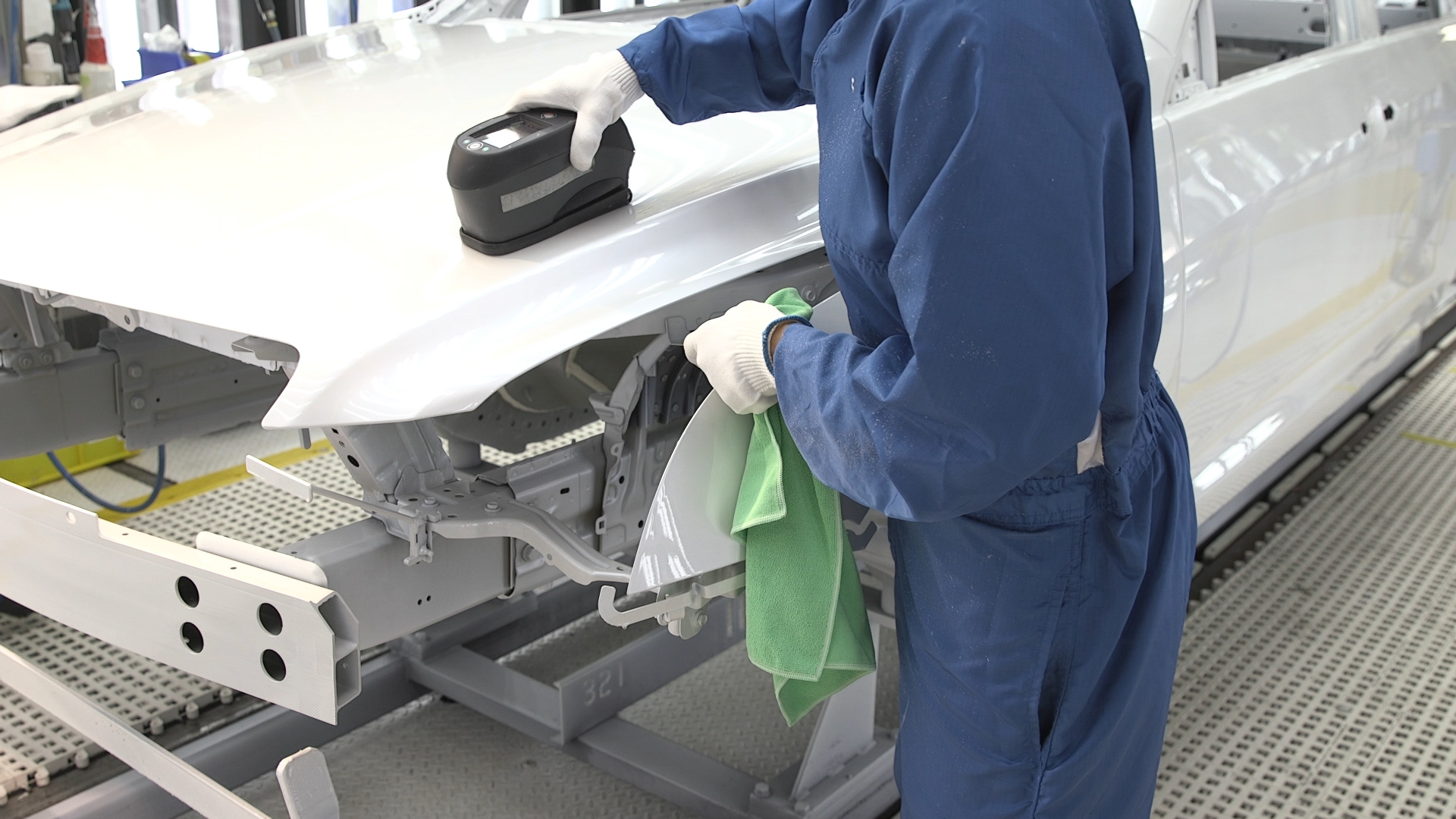Why do we solvent wipe?
To remove sealer. At the end of a sealer line, we will use a solvent wipe to remove any sealer that deposited or splattered onto the vehicle. The 85/15 or 90/10 blends will remove that sealer before it is baked on in the gel oven.
To remove foreign contaminants or cratering agents. Cratering is the formation of small, bowl-shaped depressions in a coating film which frequently have drops or bands of materials at their centers and raised circular edges. The logic behind our alcohol wipes is that solvent inside the alcohol wipe will break down and wick the cratering agent or foreign contaminant right off the vehicle.
To reduce static charge. If a vehicle has a static charge, it is likely that it will attract airborne contaminations while transferring to different booths. Using our solvent wipes will reduce static charge on the vehicle and help prevent airborne contaminations.
Solvent is released effectively. The wipes release the solvent slowly in a metered release, providing the ability to only need one wipe per vehicle without drying out.
How do we use solvent wipes?
On each of our wipes, you will find the part number, the chemical blend, and the saturation level. Of that chemical solution, there are 1,000 mL per pouch.
When opening your solvent wipes, we recommend rotating the wipes 90° counterclockwise – this will place the folded edge at the opening allowing you to pull out a single wipe without the rest unraveling. Remember to reseal the wipes when not in use to prevent the rest of the wipes from drying out.
Here are some tips to use during the wiping process:
- Use your left hand on the left side of the vehicle and your right hand on the right side of the vehicle.
- Wipe inboard to outboard, front to back, top to bottom.
- Overlap wipes by 20%.
- Finish wiping motion by “wiping off” the vehicle.
- Use one wipe per operator per vehicle to prevent cross-contamination of vehicles.
- For most effective use of wipes, do not stack multiple wipes.
- When you are done with your solvent wipe, always dispose of it in a properly grounded safety can.
- Opening a car door with the solvent wipe may fracture the cloth, leaving the potential for fibers to fall off, so we recommend you open the car door first and then wipe down the surface.
As a reminder, PPE in a Paint Shop is essential and includes coveralls, safety glasses, and gloves. It protects both the vehicle, and more importantly, it protects you. Nitro Gloves should be used while using solvents in a paint shop. Solvent wiping is often the last line of defense in a paint shop and following these best practices will increase you FTCs and reduce your overall dirt counts.
Here are our Pro Tips for using solvent wipes:
- To avoid cross-contamination, change solvent wipes between every vehicle.
- Immediately replace a torn or fractured wipe.
- Avoid touching vehicle with coveralls or gloves.

